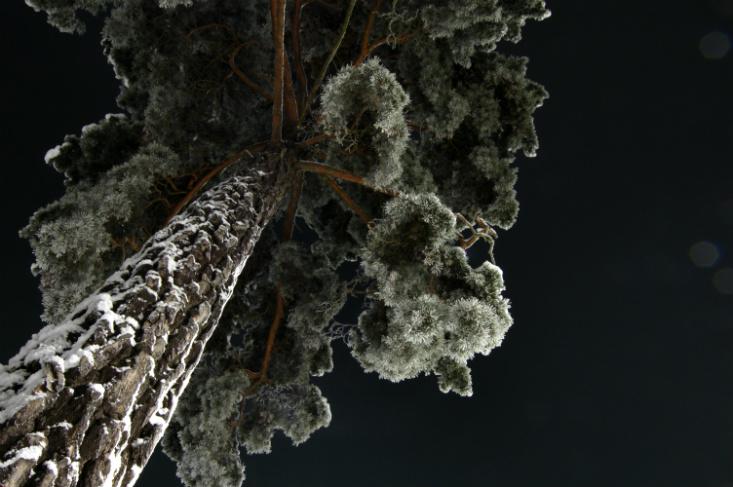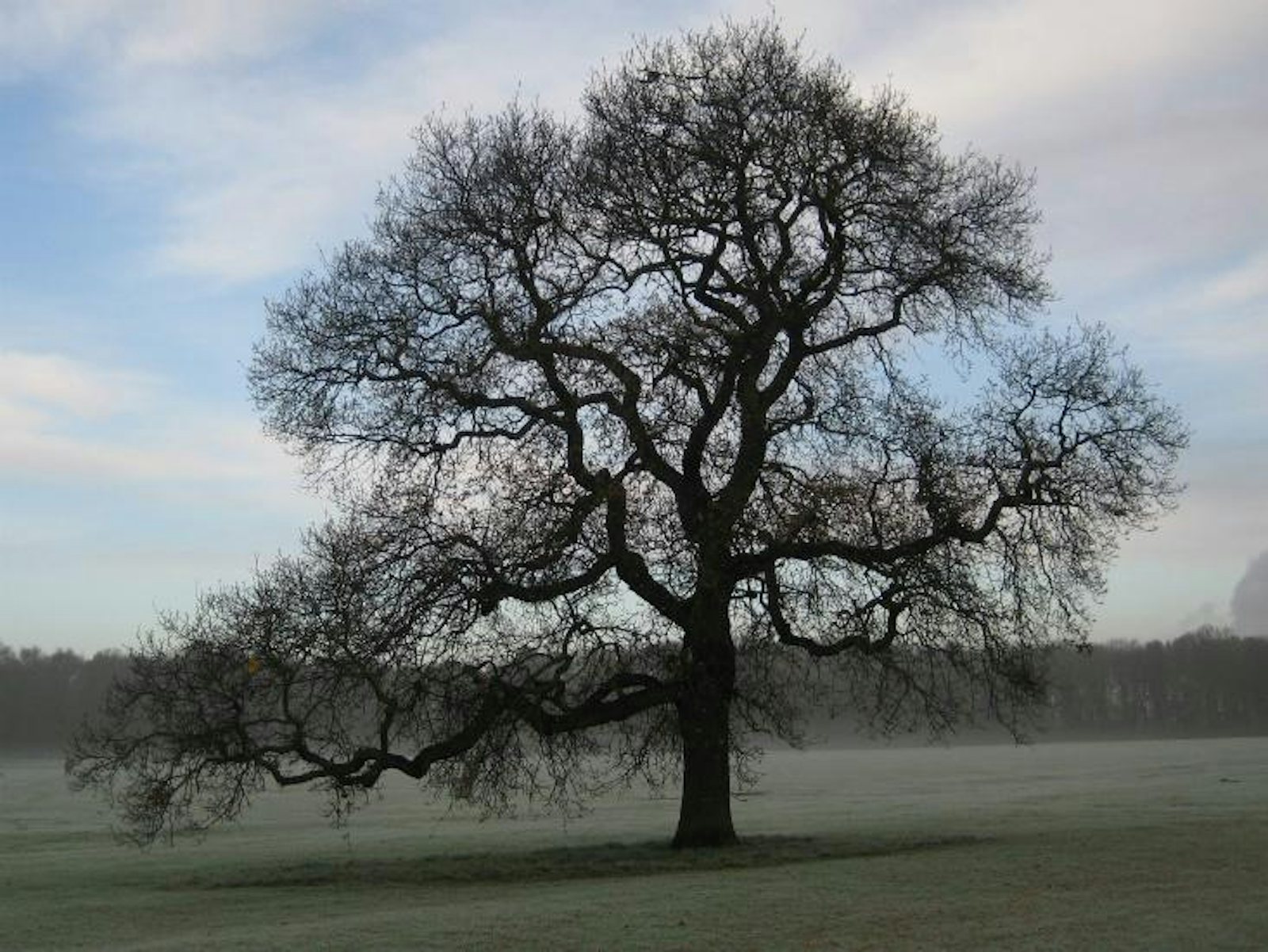On some clear winter mornings, we are treated to one of the highlights of the season: a thin layer of white frost delicately coating surfaces like individual grass blades. But even when a veneer of ice crystals encrusts much of the outdoor landscape, you may notice it missing from certain sites—the grass beneath a pine tree or the concrete below your Civic. Thousands of years ago, these frost-free patches led the ancients to imagine that the Moon and stars cast an icy covering down to Earth on cloudless nights.
But the ancients misunderstood the phenomenon’s true origins. Frost does not fall. By 350 B.C., Aristotle noticed that frost and dew rarely accumulate on mountain summits, suggesting that it’s unlikely that they drop from above. Following Aristotle’s observations, other people realized that both dewdrops and frost are most likely to form upon materials that cool quickly, like metal. These findings helped reveal that dew and frost come from water vapor held invisibly in the air that condenses on solid surfaces under the right conditions.
No less romantic than the idea of frost falling from the Moon and stars, ice that coalesces from thin air is a fascinating (and true) story. Ideal frost-forming weather begins with a clear winter sky and a grassy field that radiates the heat it absorbed during the day back into the cloudless sky. “It is all about the temperature,” says climate scientist Edwin Gerber of New York University.
Once cooled, the ground chills the thin layer of air just above it. Cool air can’t hold as much moisture as warm air, and if the temperature drops below the dew point, the water begins to leak out. This excess water condenses onto the nearest surface. When the air is above 32 degrees Fahrenheit, the moisture deposits as beads of dew; at lower temperatures, it accumulates as frost. (Farther from Earth’s surface, moisture becomes fog or clouds.)
Frost can appear most anywhere when local weather conditions are cold and clear, including high-elevation areas in the tropics. It is less likely, however, to form when land is bordered by water, as oceans and lakes change the temperature and water content of surrounding air.

But if frost originates from airborne vapor rather than falling from above, then why is it sometimes missing beneath the cover of a tree or parked car? According to Gerber, these large objects are all heat traps. “What the tree is doing is preventing the surface from cooling,” he says. Leaves, evergreen needles, and branches hinder and reflect escaping heat back down to the ground.
A 2013 study found that the land in an average forest clearing radiates 65 percent of its heat back to the atmosphere, while ground under complete forest coverage loses just 45 percent. Heat stored in the ground beneath the canopy of a tree escapes too slowly, so the ground doesn’t get as cold and frost can’t form. Thus that grassy circle remains frost free, mirroring the tree above it.
Gerber notes that a related phenomenon is the greenhouse effect, whereby atmospheric gases absorb heat radiating from Earth and send it back down to the surface. If Earth didn’t have a greenhouse effect, the planet’s average temperature would be far below freezing—not good if you want to support water-based life like us. Global warming is due to amplification of the natural greenhouse effect.
Because clouds are packed with water vapor, a greenhouse gas, they, too, trap warmth. “On cloudy nights, you are less likely to have dew and frost,” says Gerber.
So while the ancients were wrong about the source of frost, they were on the right track when they observed that this fantastic event only happens on a clear, crisp winter night, with the moon and the stars visible up above.
Becca Cudmore is an editorial intern at Nautilus.


























